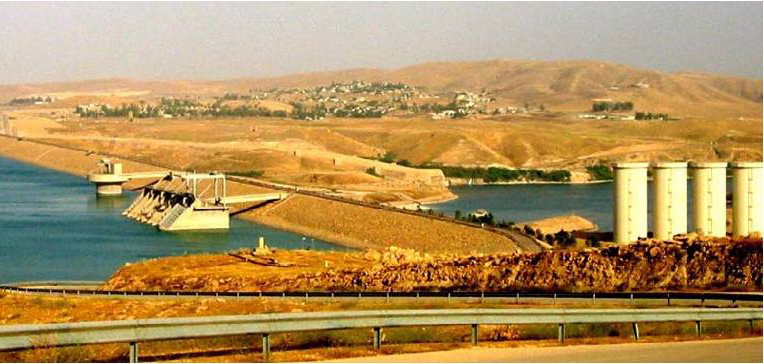Controlling the Iraqi Dams: The Key to Controlling the Country

Jihadist militia group ‘The Islamic State’ is progressing towards control of key Iraqi dams. These developments in the conflict pose significant threats to the food and water security, and to the lives, of the entire Iraqi population.
Background
In a recent statement, the Special Representative of the United Nations Secretary-General for Iraq, Nickolay Mladenov, warned against the use of dams as ‘an instrument of terror’ in the current conflict. As rebels from the Islamic State militia group, formerly known as the Islamic State of Iraq and the Levant (ISIL), are getting closer to the Mosul Dam – the most important dam in Iraq – the situation is becoming more and more dangerous.
Comment
As part of the national infrastructure, dams in Iraq are highly strategic military targets; even more so than its oil refineries. The country relies on its dams for all of its agricultural, water and electricity supplies. Controlling the flow of water resources from these points means controlling the surrounding region.
Since January 2014, the Islamic State (IS) in Iraq has succeeded in taking control of several dams. To date, the group controls the Haditha Dam (the second-largest in the country), the Samarra Barrage and the Nuaimiyah Dam. Between January and April, the IS also controlled the strategic Fallujah Dam.
The dams are an essential element of the group’s military strategy. The IS has already proved its determination to use the dams as a weapon by deliberately drowning government forces around the Nuaimiyah Dam. When in control of the Fallujah Dam, the group closed eight of the ten doors of the dam, reducing water levels in the south and flooding land upstream.
The latest concern is the security of the Mosul Dam and what IS control of this infrastructure would mean for the Iraqi people’s food and water security. The IS has been gaining strength in the Mosul area and is increasingly in a position to launch an attack on the dam. If this were to occur, access to water would be compromised and the country would face massive electricity shortages. Agriculture could also be threatened if the crops upstream were destroyed by flooding and downstream by a lack of water.
There are further concerns about the condition of the Mosul Dam, as disrepair and faulty construction threaten its overall stability. If the dam were to collapse, it would cause disastrous events, including the flooding of Baghdad, destruction of villages, a high humanitarian cost and droughts upstream.
The strategic nature of water in Iraq has a long history. The Euphrates and the Tigris have regularly been at the centre of conflicts in the region. In the 1990s, Saddam Hussein drained the Mesopotamian marshes in an act of revenge against Shia rebels. Turkey also created a conflict with Iraq by reducing the flows in the Euphrates and the Tigris rivers by eighty per cent. In 2003, control of the Haditha Dam, which provides 30 per cent of Iraq’s electricity, was a priority for the US forces.
The situation could quickly deteriorate if no effective action is taken to regain control of the dams and to stem the progress of the IS. The nature of the crisis, however, makes it difficult for Iraq to decide on long-term strategies. In the future, alternative ways of providing water, such as reusing water for irrigation purposes, combined with different ways of producing electricity, such as solar and wind power, will be necessary to diminish the country’s dependence on its dams and reduce its vulnerability.
Soazic Heslot is research assistant at the Global Food and Water Crisis Research Programme.
This article was originally published by Future Directions International. It is republished with permission.


